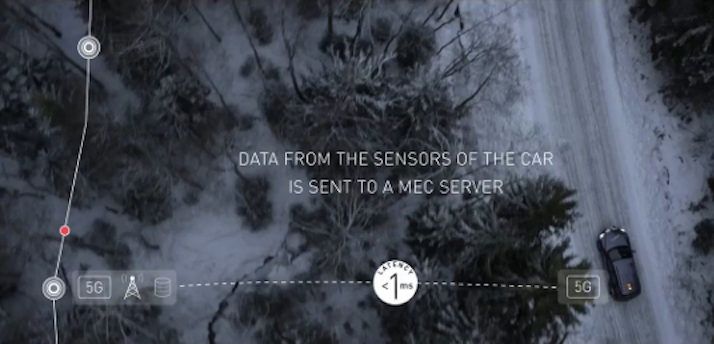A consortium led by the VTT Technical Research Center is developing and testing new connected vehicle road safety systems and services in Finland that are based on 5G cellular technology.
The new 5G-enabled safety solutions being developed by VTT and its partners are related to road weather services, pothole notification and road maintenance, automated driving, and real-time inter-vehicle transmission of 3D views.
The new vehicular network systems and the local road weather and road safety services being developed by the Finnish 5G-Safe project will provide support for drivers, road operators, and the control systems of automated vehicles.
The systems will require no action from motorists while driving, as data will be gathered and warnings will be sent to users automatically. The new solutions piloted under the 5G-Safe project are currently being finalized for more widespread availability, based on the experiences and results gained from the current trials. Scheduled for completion at the end of 2018, the project is also being used to investigate for new business opportunities for the companies involved.
In addition to VTT, the 5G-Safe project’s research partners include infrastructure services company Destia, the Finnish Meteorological Institute and its commercial services, Kaltiot (IoT developer), Sitowise (traffic and infrastructure consultancy), and Unikie (software developer).
Nokia (telecommunications), Sunit (rugged computers) and VR Transpoint (logistics) also participate as in-kind partners. Support is also being provided by a technical advisory group comprising Bittium (connectivity), Dynniq (Netherlands-based traffic technology), the Finnish Transport Agency, Telia (telecom operator) and the Finnish Transport Safety Agency (Trafi).
One of the recent pilots involved VTT’s autonomous research car Martti which was used to test its ability to detect obstacles and ruts in the road. A demonstration implemented in Sodankylä was based on the data transmission of the vehicle’s lidar sensor on a 12.5Hz frequency to the MEC (Mobile Edge Computing) server used by VTT’s 5G test network. There, the data was received by Unikie’s software algorithm, which enabled warnings to be transmitted and Martti’s route to be optimized accordingly.
“The speed of the 5G network enables transmitting large 3D views between vehicles,” said Tiia Ojanperä from VTT, who is leading the 5G-Safe project. “As a result, the communication distances of car observations can be increased and data can be obtained from areas which the car’s own sensors do not cover and are not in its view.”
Timo Sukuvaara, senior research scientist at the Finnish Meteorological Institute, noted, “5G technology can also help improve the quality of weather services. Vehicle-to-vehicle video streaming is an exciting future scenario of the opportunities for broadband transmission of information.”
Oiva Huuskonen, development manager at Destia, added, “5G technology also opens up new doors for road maintenance services. Real-time communication and automatic analysis of data allow for faster and more reliable information about the state of the roads. The forecasts produced by the road weather model can be used in services related to driving conditions and safety.”





